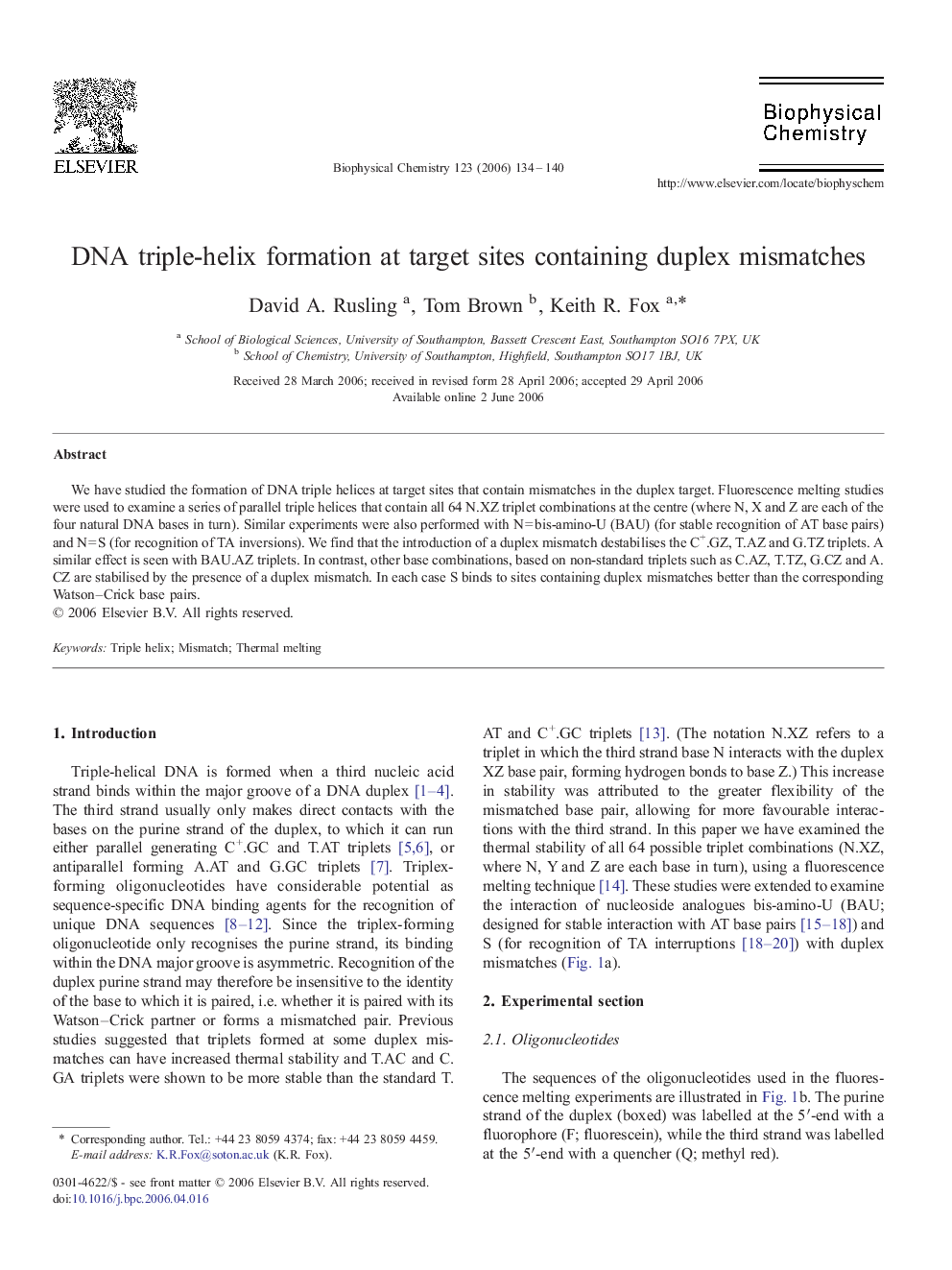| Article ID | Journal | Published Year | Pages | File Type |
|---|---|---|---|---|
| 5372342 | Biophysical Chemistry | 2006 | 7 Pages |
Abstract
We have studied the formation of DNA triple helices at target sites that contain mismatches in the duplex target. Fluorescence melting studies were used to examine a series of parallel triple helices that contain all 64 N.XZ triplet combinations at the centre (where N, X and Z are each of the four natural DNA bases in turn). Similar experiments were also performed with NÂ =Â bis-amino-U (BAU) (for stable recognition of AT base pairs) and NÂ =Â S (for recognition of TA inversions). We find that the introduction of a duplex mismatch destabilises the C+.GZ, T.AZ and G.TZ triplets. A similar effect is seen with BAU.AZ triplets. In contrast, other base combinations, based on non-standard triplets such as C.AZ, T.TZ, G.CZ and A.CZ are stabilised by the presence of a duplex mismatch. In each case S binds to sites containing duplex mismatches better than the corresponding Watson-Crick base pairs.
Keywords
Related Topics
Physical Sciences and Engineering
Chemistry
Physical and Theoretical Chemistry
Authors
David A. Rusling, Tom Brown, Keith R. Fox,
